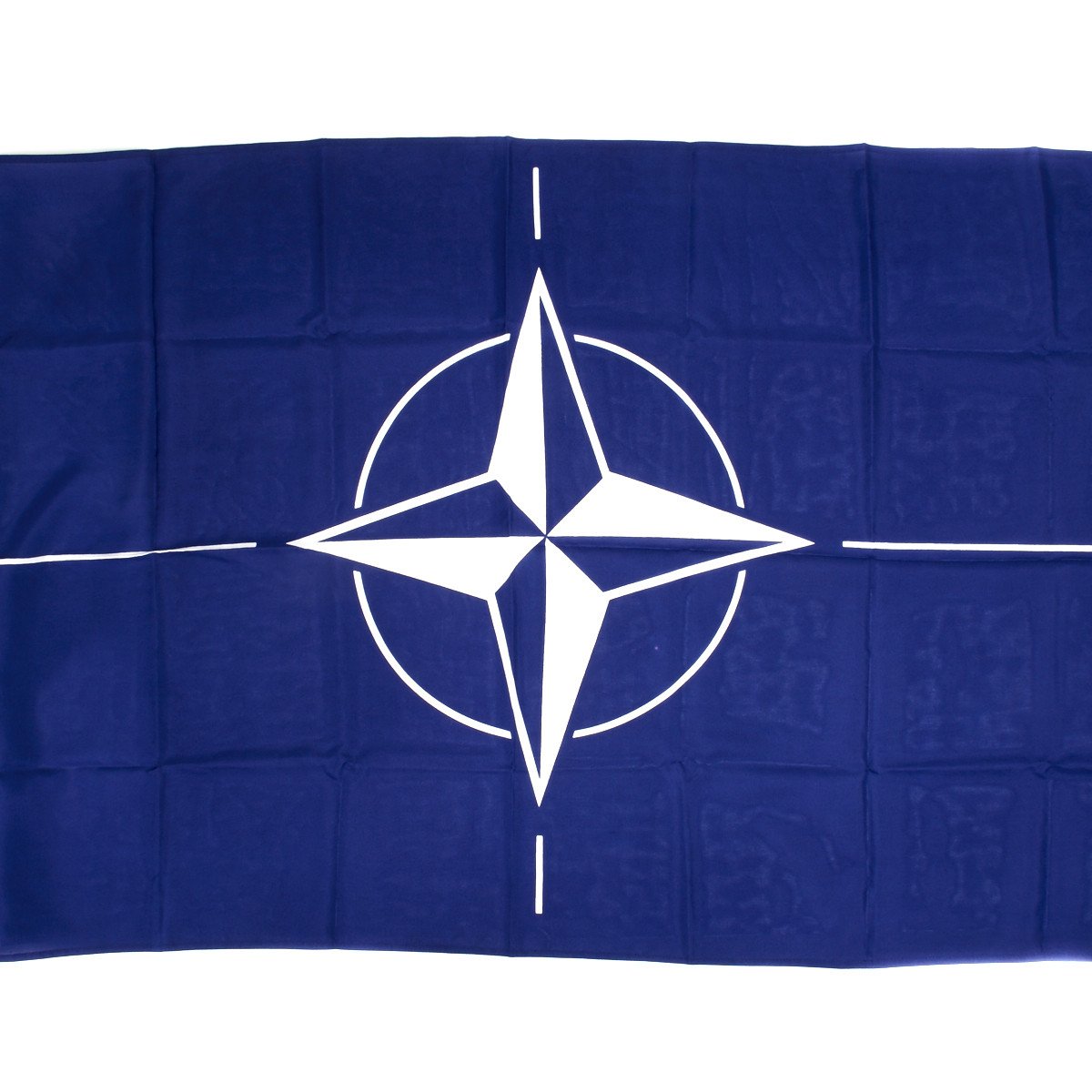Flag of NATO 3′ x 5′ New Made Items
$ 14,95 $ 8,97
New Made Item: Quality 3′ x 5′ flag. Ready to display. Complete with 2 hang side grommets. Recommended for indoor use only; Synthetic.
The flag of the North Atlantic Treaty Organization (NATO) consists of a dark blue field charged with a white compass rose emblem, with four white lines radiating from the four cardinal directions. Adopted three years after the creation of the organization, it has been the flag of NATO since October 14, 1953. The blue color symbolizes the Atlantic Ocean, while the circle stands for unity.
The North Atlantic Treaty Organization was established on April 4, 1949, when twelve nations signed the North Atlantic Treaty to counteract the perceived threat from the Soviet Union. It took almost three years before NATO began looking for an emblem, a task handled by the newly formed Information Policy Working Group. After several discussions, it concluded that a flag for the organization containing its emblem was necessary, and that it would recommend this to the North Atlantic Council.
The council stipulated that the design had to be “simple and striking,” in addition to highlighting the “peaceful purpose” of the Treaty; several proposals were rejected. An emblem of NATO was finally adopted on October 14, 1953. The decision was announced by Hastings Ismay, 1st Baron Ismay the first Secretary General of NATO exactly two weeks later on October 28, where he also elaborated on the symbolism behind the chosen design. He described the flag as “simple and inoffensive.” However, the flag was not universally well-received, and attracted criticism from for instance US Congressman John Travers Wood, who condemned the flag as a “strange and alien rag.” He made the remarks in light of an alleged incident where the flag of the United States was reportedly replaced by the NATO flag in Norfolk, Virginia, the headquarters of the Supreme Allied Commander Atlantic.
The flag was first hoisted on November 9, 1953, at the opening ceremony of the Atlantic Exhibition in Paris. However, little is known about the occasion, since the speech delivered at the event could not be found.
Prompt Shipping and Professional Packaging
We provide a variety of shipping options due to our long-running partnerships with UPS, FedEx and DHL. Our warehouse personnel are well trained and will pack the goods according to our exact and precise specifications. Before shipping your items will be thoroughly inspected and secured. Every day, we deliver to thousands of customers in different countries. This is a sign of our determination to become the largest online retailer worldwide. Both Europe as well as the USA have warehouses and distribution centers.
Note that orders containing more than one item will be subject to a processing period that is based to the particular item.
Prior to shipping the items, our staff will carry out an exhaustive inspection of the products you ordered. Today, most orders will be delivered within 48 hours. The estimated delivery time is between 3-7 days.
Returns
The stock is constantly changing. It's not entirely managed by us since we are involved with multiple entities, including the factory and our storage. Therefore, the actual inventory could alter at any time. It is possible that you will not receive your order after the order has been made.
The period of time is 30 days. Unfortunately, if 30 days have passed since you purchased your product, we are unable to provide a refund or exchange.
The item must not be in use and must be in the original packaging. The item must be in the original packaging.
Related products
Uncategorized
Uncategorized
Uncategorized
Armoured Fighting Vehicles of the World: AFVs of World War One (Hardcover Book) New Made Items
Uncategorized
Uncategorized
Uncategorized
Australian WWII Owen MK1 Machine Carbine SMG Custom Fabricated Replica with Sling Original Items
Uncategorized
Uncategorized
Uncategorized
Uncategorized
Uncategorized
Armored Burgonet Helmet & Polearm from Scottish Castle Leith Hall Circa 1700 Original Items
Uncategorized
Uncategorized
Uncategorized
Uncategorized
Uncategorized
Angolan Rebel 1970s era 60mm Inert Display Mortar from Angolan Civil War Original Items
Uncategorized
Uncategorized
Uncategorized






































































